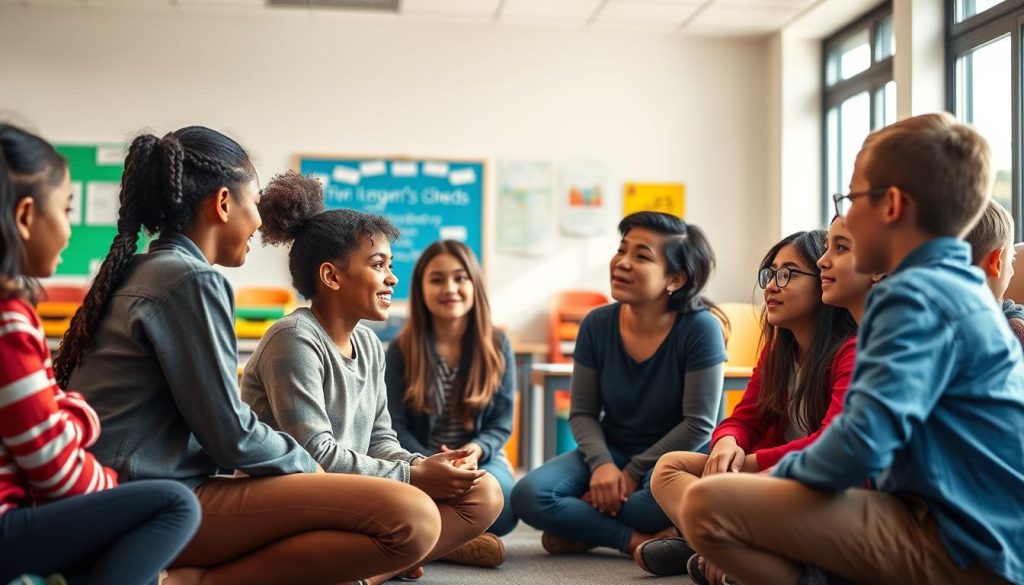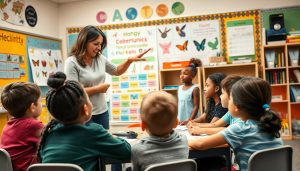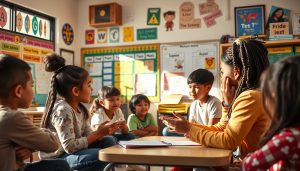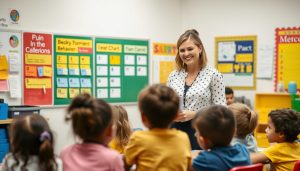Building positive teacher-student relationships creates the foundation for effective learning environments
Why Teacher-Student Relationships Are Essential Supports for Learning
Research consistently shows that positive teacher-student relationships are among the most powerful predictors of academic success. According to a comprehensive meta-analysis, these relationships influence nearly every aspect of a student’s educational experience, from attendance and engagement to achievement and behavior.
When students feel connected to their teachers, they experience:
- Increased motivation and engagement in learning activities
- Greater academic achievement across subject areas
- Improved classroom behavior and reduced disciplinary issues
- Enhanced social and emotional development
- Stronger sense of school belonging and connectedness
- Higher graduation rates and educational aspirations
These benefits are especially pronounced for students facing additional challenges, including those from disadvantaged backgrounds, students with learning differences, and those experiencing stress or trauma. For these students, a positive relationship with a teacher can be transformative, serving as a protective factor that helps mitigate risks and build resilience.
Developing the teacher skills needed to foster these relationships requires intentionality and practice. It’s not simply about being “nice” to students—it’s about creating genuine connections based on trust, respect, and a commitment to each student’s success. The good news is that these skills can be learned and refined throughout your teaching career.
Building Trust as Essential Supports for Learning
Trust forms the bedrock of effective teacher-student relationships. When students trust their teachers, they’re more willing to take risks, ask questions, and engage deeply with learning. Building this trust requires consistency, authenticity, and a genuine commitment to students’ well-being.
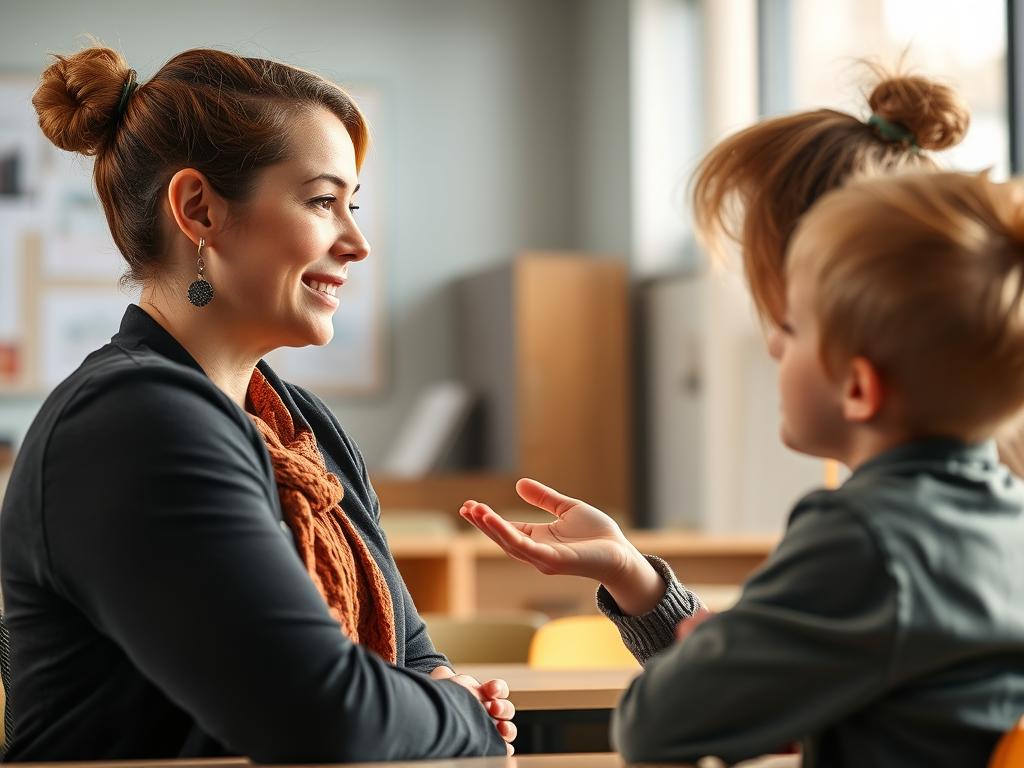
Active listening demonstrates to students that their thoughts and feelings are valued
Key Teacher Skills for Building Trust
Consistency
Students need to know what to expect from you. Consistent enforcement of rules, reliable follow-through on promises, and predictable responses help students feel secure. This consistency is especially important for students who may lack stability in other areas of their lives.
Authenticity
Students have remarkable radar for detecting insincerity. Being your authentic self—including acknowledging mistakes and showing appropriate vulnerability—models honesty and builds credibility with your students.
Fairness
Students are keenly attuned to issues of fairness. Treating all students with respect, addressing behavior consistently, and providing equitable opportunities demonstrates your commitment to justice in the classroom.
Practical Trust-Building Strategies
- Keep your promises – Even small commitments matter. If you say you’ll do something, follow through.
- Admit mistakes – When you make an error, acknowledge it directly. This models humility and growth mindset.
- Maintain confidentiality – When students share personal information (within appropriate boundaries), respect their privacy.
- Show up for students – Attend their performances, games, or presentations when possible to demonstrate support beyond academics.
- Be consistent with consequences – Apply classroom management strategies fairly and predictably.
“Trust is built with consistency. Students don’t expect teachers to be perfect, but they do expect them to be reliable, honest, and genuinely invested in their success.”
– Dr. Robert Pianta, Dean of the Curry School of Education, University of Virginia
Building trust isn’t a one-time event but an ongoing process that requires patience and persistence. The teacher skills involved in establishing trust create a foundation upon which all other aspects of the teacher-student relationship can develop.
Knowing Your Students: Personalization as Essential Supports for Learning
Effective teachers recognize that meaningful relationships begin with knowing their students as individuals. This knowledge goes beyond names and academic abilities to include understanding students’ interests, backgrounds, strengths, challenges, and aspirations. When students feel truly seen and known, they’re more likely to engage in learning and develop a sense of belonging in the classroom.
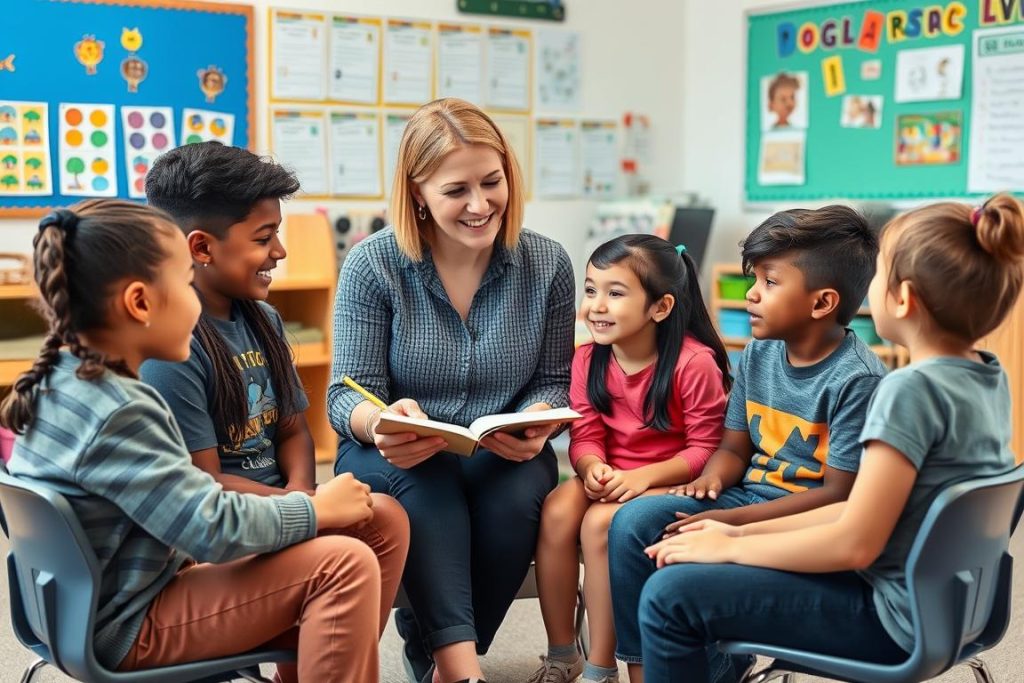
Taking time to learn about students’ interests and backgrounds builds connection and relevance
Strategies for Getting to Know Your Students
Beginning of the Year Activities
- Interest inventories – Surveys that gather information about students’ hobbies, preferences, and learning styles
- Student autobiographies – Writing or multimedia projects where students share their stories
- Two truths and a lie – A fun icebreaker that reveals interesting facts about students
- Family communication – Reaching out to families to learn more about their children and cultural backgrounds
Ongoing Relationship Building
- Regular check-ins – Brief individual conversations to gauge how students are doing
- Journal prompts – Reflective writing that provides insight into students’ thoughts and feelings
- Observation – Watching how students interact and engage during different activities
- Attending extracurricular events – Supporting students in their interests outside the classroom
The teacher skills involved in getting to know students require both structured approaches and spontaneous opportunities. Creating systems for gathering information is important, but equally valuable are the informal conversations that happen before class, during transitions, or after school.
Quick Connection Strategy: 2×10
The 2×10 strategy is simple but powerful: Spend 2 minutes per day for 10 consecutive days talking with a student about anything other than academics. This focused attention can transform challenging relationships and build rapport with students who may feel disconnected.
Remember that knowing your students is not a one-time event but an ongoing process. Students grow and change throughout the school year, and maintaining current knowledge about their lives and interests demonstrates your continued investment in them as individuals.
Enhance Your Relationship-Building Teacher Skills
Looking for structured guidance on building meaningful connections with your students? Our comprehensive course provides research-based strategies and practical tools you can implement immediately in your classroom.
Effective Communication: Verbal and Nonverbal Essential Supports for Learning
Communication forms the backbone of strong teacher-student relationships. How we speak to students, listen to their concerns, and even our body language all send powerful messages about how we value them. Developing advanced communication teacher skills allows educators to connect more effectively with students of all ages and backgrounds.
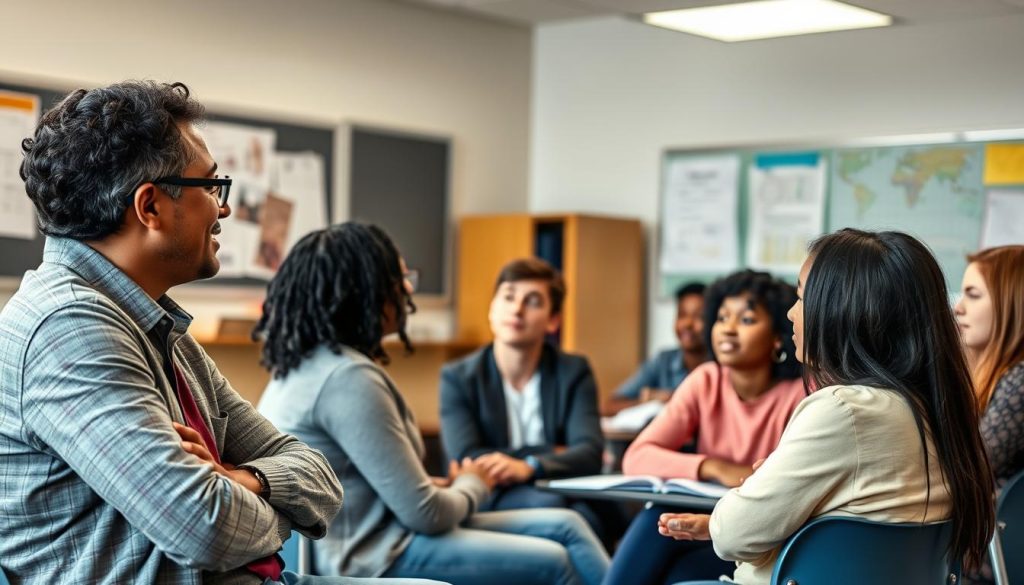
Nonverbal communication often speaks louder than words in building relationships
Active Listening
Perhaps the most important communication skill for teachers is active listening. When we truly listen to students, we validate their experiences and demonstrate that their thoughts matter. Active listening involves:
- Giving full attention – Setting aside distractions and focusing completely on the student
- Using appropriate body language – Maintaining eye contact, nodding, and facing the student
- Reflecting and clarifying – Paraphrasing what you’ve heard to ensure understanding
- Avoiding interruptions – Allowing students to complete their thoughts before responding
- Asking thoughtful follow-up questions – Showing genuine interest in what students share
Active listening is a teacher skill that requires practice and intentionality, especially during busy school days when multiple demands compete for your attention. However, the few minutes spent truly listening to a student can make a profound difference in how they perceive their value in your classroom.
Positive Language and Framing
The words we choose and how we frame expectations significantly impact our relationships with students. Consider these approaches:
Instead of…
- “Don’t run in the hallway.”
- “You’re not paying attention.”
- “That’s wrong.”
- “Why aren’t you working?”
Try…
- “Please walk safely in the hallway.”
- “I need your eyes on me right now.”
- “You’re on the right track. Let’s look at this part again.”
- “How can I help you get started?”
Positive framing focuses on what students should do rather than what they shouldn’t do. It assumes positive intent and offers guidance rather than criticism. This approach preserves students’ dignity and maintains a supportive classroom atmosphere.
Nonverbal Communication
Research suggests that a significant portion of our communication is nonverbal. For teachers, awareness of nonverbal cues is an essential teacher skill that impacts relationship quality. Key aspects include:
- Facial expressions – Smiling, showing interest, and maintaining a welcoming expression
- Body language – Using open posture, appropriate proximity, and gestures that convey warmth
- Voice tone and pace – Speaking clearly, varying tone for emphasis, and adjusting pace for understanding
- Physical positioning – Getting on students’ level when possible, especially with younger children
Being mindful of these nonverbal elements helps ensure that your actions align with your words, creating consistency that builds trust and strengthens relationships.
Effective communication skills take time to develop, but they’re among the most valuable teacher skills you can cultivate. By focusing on how you listen, speak, and present yourself nonverbally, you create a communication environment that supports strong relationships with all students.
Culturally Responsive Teaching as Essential Supports for Learning
Building strong relationships with students requires recognizing and valuing their cultural identities, experiences, and perspectives. Culturally responsive teaching acknowledges the importance of including students’ cultural references in all aspects of learning, creating more equitable and inclusive classroom environments.
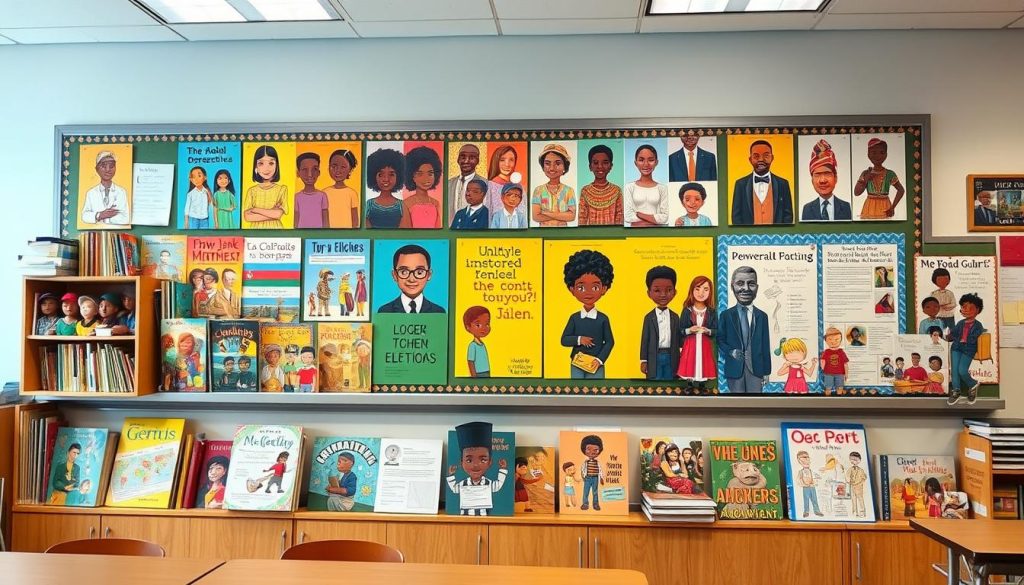
Classroom materials that reflect diverse cultures help students feel seen and valued
Key Principles of Culturally Responsive Relationship Building
Cultural Self-Awareness
Understanding your own cultural background, biases, and perspectives is the first step in culturally responsive teaching. This self-awareness helps you recognize how your cultural lens might influence your interactions with students from different backgrounds.
Cultural Knowledge
Learning about the cultural backgrounds of your students—including their values, traditions, communication styles, and learning preferences—helps you build more authentic connections and create more relevant learning experiences.
Cultural Responsiveness
Adapting your teaching approaches to honor and incorporate students’ cultural strengths demonstrates respect and creates more engaging learning environments where all students can see themselves represented.
Developing these teacher skills requires ongoing learning and reflection. No teacher can become an expert in all cultures, but showing genuine interest and willingness to learn sends a powerful message to students about how you value their identities.
Practical Strategies for Culturally Responsive Relationship Building
- Learn to pronounce names correctly – Take the time to learn the proper pronunciation of each student’s name, and correct yourself when you make mistakes.
- Incorporate diverse perspectives in curriculum – Ensure that learning materials reflect a variety of cultural viewpoints and include contributions from diverse groups.
- Create opportunities for cultural sharing – Design activities that allow students to share aspects of their cultural backgrounds in meaningful ways.
- Recognize different communication styles – Be aware that cultural norms around eye contact, speaking volume, turn-taking, and other communication patterns vary widely.
- Connect with families – Build relationships with students’ families to better understand their cultural contexts and educational priorities.
Cultural Responsiveness in Action
When Ms. Rodriguez noticed that her Hmong students were reluctant to speak in whole-class discussions, she researched Hmong cultural norms around communication. She learned that in many Hmong families, children are taught to listen respectfully to adults rather than actively participate in discussions. With this understanding, she gradually introduced alternative participation structures—including think-pair-share and small group discussions—that allowed these students to engage more comfortably while respecting their cultural backgrounds.
Culturally responsive teaching is not an add-on to your practice but an integral part of how you build relationships with all students. By developing these teacher skills, you create a classroom where every student feels valued, represented, and understood—essential conditions for learning and growth.
Restorative Practices: Relationship-Centered Essential Supports for Learning
Traditional approaches to classroom management often focus on rules and consequences, potentially damaging teacher-student relationships when conflicts arise. Restorative practices offer an alternative approach that maintains and strengthens relationships even during challenging situations, creating a more supportive learning environment for all students.
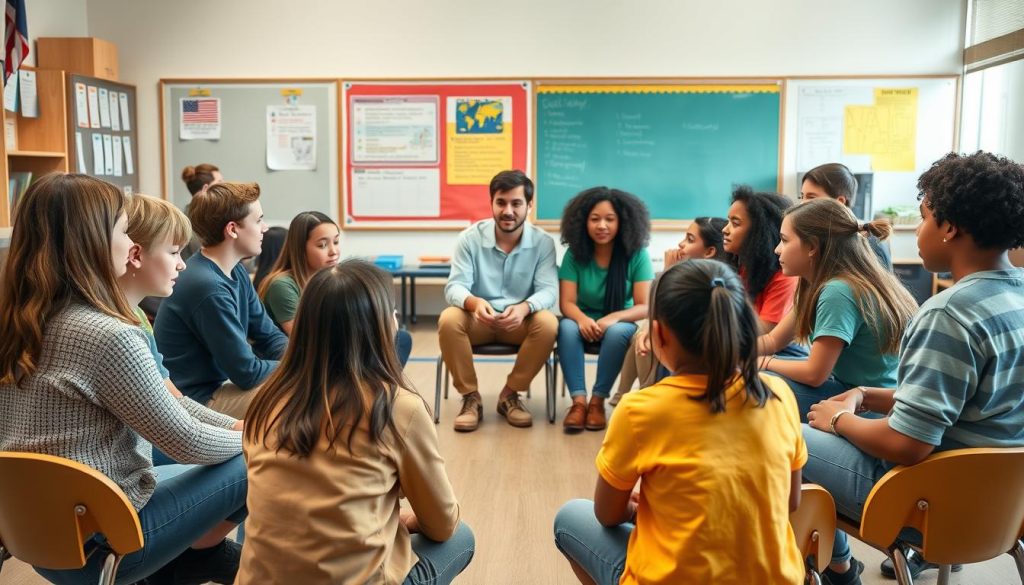
Restorative circles provide a structured format for building community and addressing conflicts
Core Principles of Restorative Practices
- Relationships First – Prioritizing positive connections as the foundation for learning and community
- Mutual Respect – Valuing the dignity and perspective of every community member
- Responsibility – Encouraging accountability for actions and their impact on others
- Repair – Focusing on healing harm rather than punishing wrongdoing
- Reintegration – Supporting the full inclusion of all community members
These principles guide the implementation of restorative practices, which range from proactive community-building to responsive approaches for addressing harm. Developing these teacher skills allows educators to maintain strong relationships even during disciplinary situations.
Implementing Restorative Approaches
Proactive Strategies
- Community circles – Regular gatherings where all participants have equal opportunity to speak and be heard
- Check-in/check-out routines – Brief opportunities for students to share their feelings and experiences
- Collaborative norm-setting – Involving students in creating classroom expectations
- Relationship-building activities – Structured opportunities for positive interactions
Responsive Strategies
- Restorative questions – Structured inquiries that focus on impact and repair
- Impromptu conferences – Brief conversations to address minor conflicts
- Formal conferences – Facilitated meetings for more serious incidents
- Reintegration plans – Supportive approaches for students returning after absence or exclusion
Implementing restorative practices requires specific teacher skills, including facilitation, active listening, and the ability to ask questions that promote reflection rather than defensiveness. These skills develop over time with practice and support.
“The fundamental hypothesis of restorative practices is that human beings are happier, more cooperative and productive, and more likely to make positive changes when those in positions of authority do things with them, rather than to them or for them.”
– Ted Wachtel, International Institute for Restorative Practices
Restorative practices represent a significant shift in how many teachers approach classroom management. Rather than seeing behavior issues as infractions requiring punishment, this approach views them as opportunities to strengthen relationships and build social-emotional skills—truly essential supports for learning.
Daily Practices That Strengthen Essential Supports for Learning
Building strong teacher-student relationships doesn’t require elaborate programs or extensive time commitments. Often, it’s the small, consistent actions integrated into daily routines that have the most significant impact. These practices demonstrate care and create multiple opportunities for positive interactions throughout the school day.
Greeting students at the door sets a positive tone for learning and builds connection
Simple Yet Powerful Relationship-Building Routines
Morning Greetings
Standing at the door to welcome students by name as they enter your classroom is one of the most impactful relationship-building practices. This brief interaction allows you to gauge each student’s emotional state, ensure they feel seen, and set a positive tone for learning.
Closing Circles
Ending the day or class period with a brief gathering allows students to reflect on their learning, share appreciations, and transition positively. Even a 3-5 minute closing ritual provides valuable connection time and sends students off with a sense of completion.
Positive Notes
Taking a few minutes to write specific, positive notes to students about their progress, contributions, or character builds relationships and motivation. Aim to send home positive communications regularly, not just when there are concerns.
Integrating Connection Throughout Instruction
Beyond dedicated relationship-building activities, skilled teachers weave connection opportunities into regular instruction. These teacher skills make relationship building a natural part of the learning process:
- Using student interests in examples – Incorporating students’ hobbies, cultural references, and experiences into lesson content
- Celebrating progress – Acknowledging growth and effort, not just achievement
- Providing specific feedback – Offering detailed, personalized comments that show you’re paying attention
- Checking in during independent work – Using this time for brief individual conversations
- Being present during transitions – Using passing periods and transitions for informal interactions
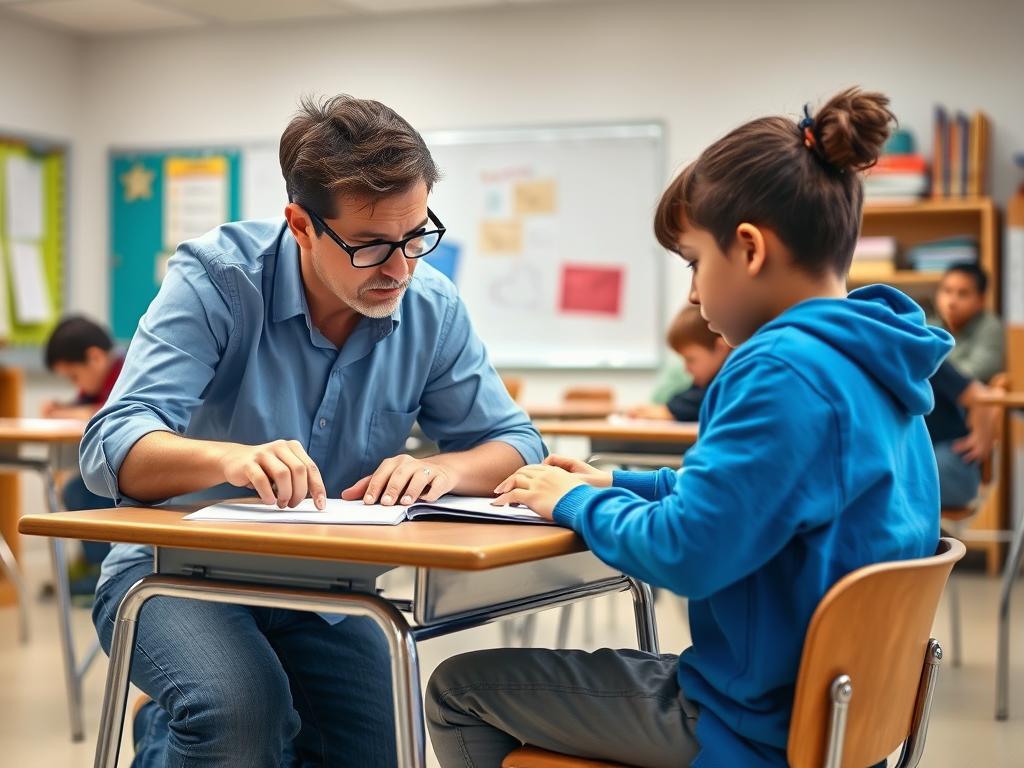
Providing specific, growth-oriented feedback strengthens relationships while supporting learning
These daily practices don’t require extensive preparation or additional time—they simply involve being intentional about how you use the moments already available in your school day. By developing these teacher skills and making them routine, you create a classroom environment rich in positive interactions and relationship-building opportunities.
Ready to Transform Your Classroom Relationships?
Our comprehensive course on building relationships with students provides detailed guidance on implementing these daily practices and many more strategies to strengthen your connections with students.
Building Relationships with Challenging Students: Critical Essential Supports for Learning
Some of the most important relationships to build are often the most difficult. Students who present challenging behaviors frequently need positive teacher relationships the most, yet their actions can make connection challenging. Developing specific teacher skills for reaching these students is essential for creating inclusive learning environments where all students can succeed.
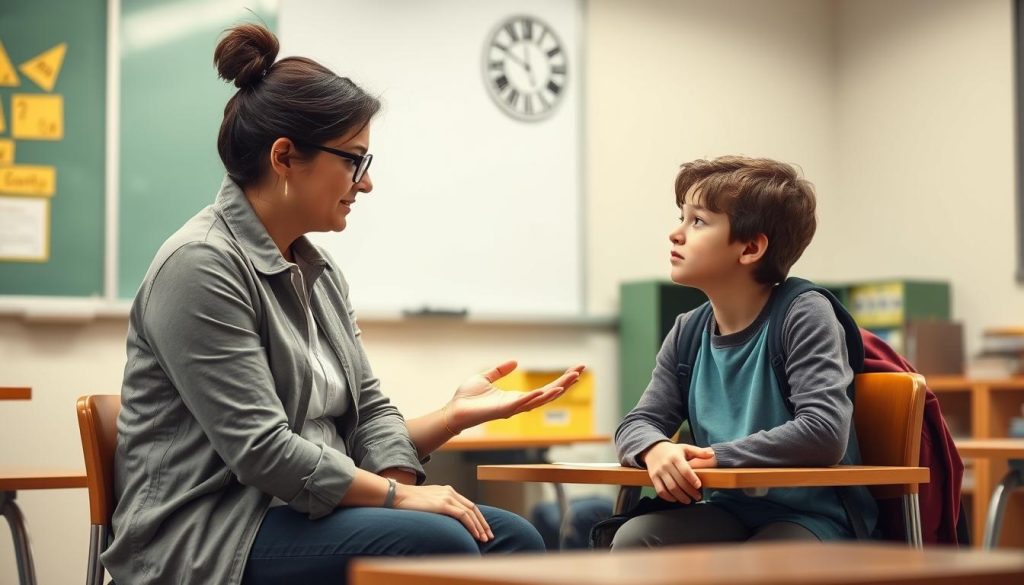
One-on-one conversations in neutral moments can help build trust with challenging students
Understanding Challenging Behavior
Before effective relationships can be built, it’s important to shift perspective on challenging behavior. Rather than viewing it as defiance or disrespect, consider these alternative frameworks:
- Behavior as communication – Challenging behaviors often express unmet needs or undeveloped skills
- Stress responses – Many challenging behaviors stem from stress, trauma, or perceived threats
- Skill deficits – Some students lack the social-emotional skills needed for appropriate behavior
- Relationship seeking – Paradoxically, some challenging behaviors are attempts to connect
This shift in perspective allows teachers to respond with empathy rather than taking behaviors personally—a crucial teacher skill when working with challenging students.
Strategies for Building Relationships with Challenging Students
Proactive Approaches
- Banking time – Scheduling regular positive interactions unrelated to behavior or academics
- Interest mapping – Identifying and leveraging students’ interests and strengths
- Relationship reset – Explicitly acknowledging past difficulties and committing to a fresh start
- Strength spotting – Intentionally looking for and acknowledging positive qualities
Responsive Approaches
- Private corrections – Addressing behavior concerns individually rather than publicly
- Emotion coaching – Helping students identify and manage their emotions
- Collaborative problem-solving – Working with students to address underlying issues
- Repair opportunities – Creating structured ways to rebuild relationships after conflicts
Remember the 5:1 Ratio
Research suggests that maintaining at least five positive interactions for every negative or corrective interaction is crucial for healthy relationships. This ratio is especially important for students with challenging behaviors, who often experience a much higher proportion of negative interactions with adults.
Building relationships with challenging students requires patience, persistence, and resilience—key teacher skills that develop over time. Progress may be slow and setbacks are common, but the impact of these relationships can be transformative for students who may have few other positive connections with adults.
By viewing challenging behavior through a relationship lens rather than a compliance lens, teachers can create essential supports for learning that reach all students, including those who need these connections most.
Measuring the Impact of Essential Supports for Learning
How do we know if our relationship-building efforts are making a difference? While the quality of teacher-student relationships can be difficult to quantify, there are several indicators that can help educators assess their progress and impact. Monitoring these outcomes helps refine teacher skills and approaches to better meet student needs.
Gathering student feedback provides valuable insights for relationship improvement
Indicators of Strong Teacher-Student Relationships
Observable Behaviors
- Students seek out the teacher for help or conversation
- High levels of student participation and engagement
- Positive classroom atmosphere and interactions
- Students show resilience after setbacks
- Conflicts are resolved constructively
Academic Indicators
- Improved attendance and punctuality
- Increased work completion and quality
- Greater willingness to take academic risks
- Higher achievement and growth measures
- More student-initiated questions
Student Feedback
- Reports of feeling valued and respected
- Perception that the teacher cares about them
- Sense of belonging in the classroom
- Belief that the teacher is fair and helpful
- Willingness to recommend the class to peers
Tools for Gathering Relationship Data
Several approaches can help teachers gather more formal data about their relationships with students:
- Student surveys – Anonymous questionnaires about classroom climate and teacher-student relationships
- Relationship mapping – Visual tools to identify which students have strong connections with adults
- Exit tickets – Brief end-of-class reflections that include relationship-focused questions
- Peer observation – Colleagues providing feedback on teacher-student interactions
- Video reflection – Recording and analyzing your own teaching to observe relationship dynamics
These assessment approaches help teachers develop the reflective teacher skills needed to continuously improve their relationship-building practice. By gathering data systematically, educators can identify patterns, recognize strengths, and target areas for growth.
“What gets measured gets improved. When we intentionally track the quality of our relationships with students, we signal their importance and create accountability for this essential aspect of teaching.”
– Dr. Clayton Cook, Professor of Educational Psychology, University of Minnesota
Remember that relationship quality isn’t about perfection but about continuous improvement. By monitoring the impact of your relationship-building efforts, you can refine your teacher skills and approaches to better serve all students in your classroom.
Conclusion: Investing in Essential Supports for Learning
Building strong teacher-student relationships isn’t just a nice addition to effective teaching—it’s foundational to student success. These relationships create the conditions where learning can flourish, motivation can develop, and students can take the risks necessary for growth. As we’ve explored throughout this article, the teacher skills involved in relationship building are both art and science, requiring intentionality, practice, and reflection.
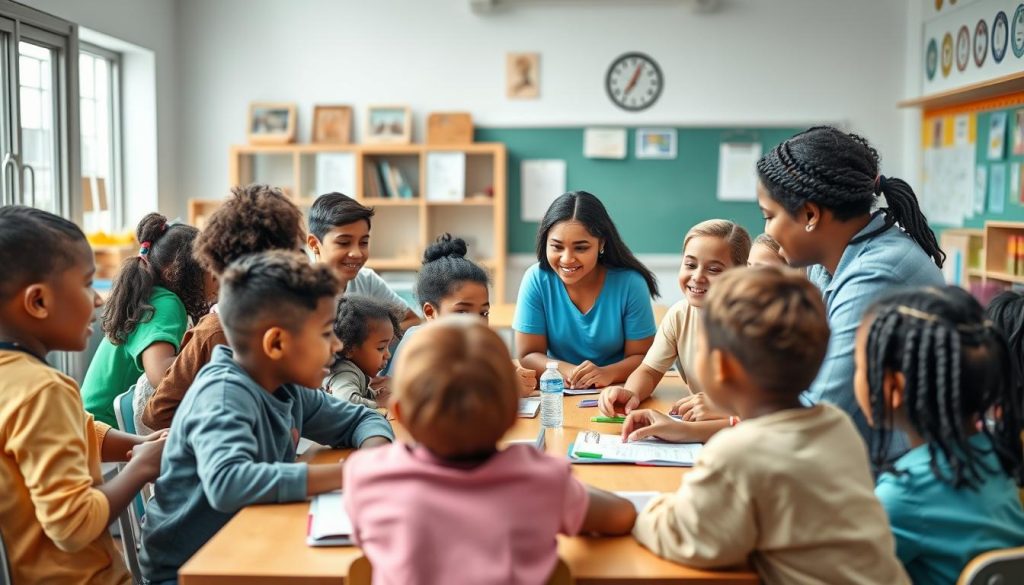
Strong teacher-student relationships create the foundation where all students can thrive
Remember these key principles as you continue developing your relationship-building practice:
- Relationships first – Prioritize connection before curriculum, especially at the beginning of the year
- Intentionality matters – The strongest relationships develop through deliberate, consistent actions
- Small moments add up – Brief, positive interactions accumulate to create meaningful connections
- All students need connection – Every child deserves to feel valued, known, and supported
- Growth mindset applies – Relationship-building skills can be developed and improved over time
The investment you make in building relationships with your students yields returns far beyond academic achievement. These connections create a foundation for social-emotional development, foster a sense of belonging, and can even serve as protective factors for students facing challenges outside school. For some students, a positive relationship with a teacher may be the most stable and supportive adult connection in their lives.
As you implement the strategies discussed in this article, remember that relationship building is not a one-size-fits-all process. Different students will respond to different approaches, and what works in one context may need adaptation in another. The teacher skills you develop through this process—observation, flexibility, cultural responsiveness, and reflection—will serve you throughout your teaching career.
By prioritizing relationships as essential supports for learning, you create a classroom where students don’t just learn more—they thrive.
Continue Your Professional Growth
Ready to deepen your relationship-building teacher skills? Credits for Teachers offers comprehensive professional development resources designed specifically for K-12 educators.
Explore Professional Development Resources
Or learn specific strategies for building relationships with our specialized course:

